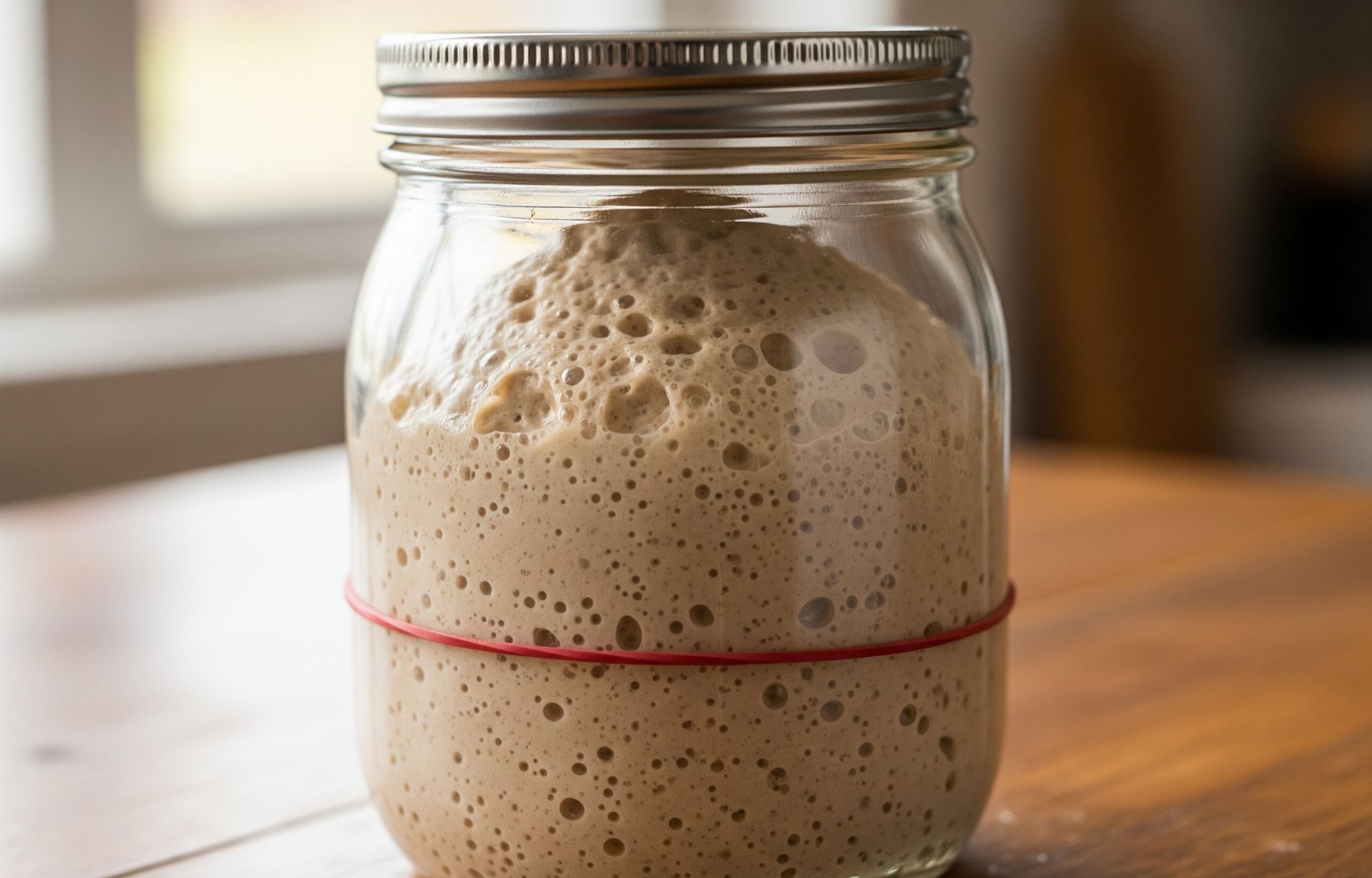Sourdough Starter 101
Cultivating the heart of your bread.
A sourdough starter is a living culture of wild yeast and bacteria. It's what gives sourdough its characteristic tangy flavor, open crumb, and long shelf life. Creating one is a magical process, turning just flour and water into a powerful leavening agent.

Creating a Starter (Simplified)
This process takes about 7-10 days. Patience is key!
- Day 1: In a clean jar, mix 50g of whole wheat flour and 50g of warm water. Cover loosely and let it sit in a warm spot (75-80°F / 24-27°C) for 24 hours.
- Day 2: You might see a few bubbles. Do nothing. Let it rest for another 24 hours.
- Day 3: Discard all but 50g of the mixture. Add 50g of bread flour and 50g of warm water. Mix well, cover, and wait 24 hours.
- Day 4-7: Repeat the process from Day 3 every 24 hours. You should start to see more activity, bubbles, and a sour, tangy smell. It might rise and fall predictably.
- Day 8+: Move to a 12-hour feeding schedule. Discard all but 50g, and feed with 50g bread flour and 50g water every 12 hours. When it reliably doubles or triples in volume within 4-8 hours after feeding, it's ready to use!
Maintaining Your Starter
Once your starter is active, you have options:
- Countertop (Frequent Baking): If you bake several times a week, keep your starter on the counter and feed it once or twice a day.
- Refrigerator (Infrequent Baking): If you bake less often, store it in the fridge. You only need to feed it once a week. Pull it out and give it 2-3 feedings at room temperature to wake it up before you plan to bake.
What is "Peak Activity"?
Using a starter at its "peak" is crucial for a strong rise. This is the point a few hours after feeding when it has reached its maximum volume and is full of bubbles, but hasn't started to collapse yet. This is when the yeast is most active. The CrumbScience Pro tracker allows you to account for starter activity in its predictions.
Troubleshooting
- No activity? Find a warmer spot. Temperature is key.
- Hooch (dark liquid)? It's just a sign of hunger. Stir it in or pour it off and feed as normal.
- Smells weird? A range of smells is normal in the first week (gym socks, vinegar). A consistent, pleasantly sour smell is what you're aiming for.
Track Your Starter's Health
Use the free Starter Log in CrumbScience to keep track of feedings and uses, helping you maintain a consistent schedule and a happy starter.
Go to the Starter Log